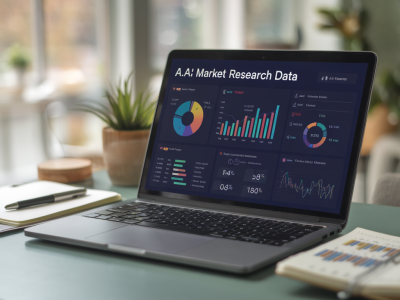
Understanding your audience is one of the essential building blocks in creating successful marketing campaigns and driving genuine engagement with your brand. In today’s highly competitive market, merely casting a wide net no longer suffices. Audiences expect tailored experiences that speak to their unique needs, preferences, and behaviors. This is where audience segmentation takes center stage. By breaking large, homogeneous audience groups into smaller, more specific segments, businesses can deliver personalized user experiences that resonate deeply.
What is Audience Segmentation?
Audience segmentation is the process of dividing a brand’s target audience into smaller groups or segments based on shared characteristics. These attributes can range from demographic data, such as age and gender, to behavioral trends like purchasing history or online activity. By creating these focused groups, businesses can craft marketing messages and experiences that feel tailor-made for particular customer segments.
For example, think about Netflix. If they didn’t use segmentation and personalization, each subscriber would see the same curated list of recommendations. Instead, Netflix leverages its data to create highly specific audience profiles, ensuring users are exposed to TV shows and films aligned with their viewing history and preferences. This personalized experience keeps users engaged and loyal to the platform.
Why is Audience Segmentation Important in Marketing?
In the modern digital marketing era, personalization isn’t a luxury—it’s an expectation. Here’s why audience segmentation is foundational to crafting these personalized experiences:
- Improved ROI: Targeted campaigns yield better results, as they are tailored to meet the actual needs and desires of specific segments. Your ad spend will go further because you're reaching the right audience.
- Enhanced Customer Engagement: By delivering messages and experiences that feel personal, brands foster deeper connections with their audience. This translates to higher engagement rates, increased retention, and customer loyalty.
- Competitive Edge: In a crowded market, brands that understand their customers better and cater to their specific needs stand out from the competition.
- Efficient Resource Allocation: Segmentation ensures you’re focusing your efforts where they’re most likely to yield results instead of wasting time on a one-size-fits-all approach.
Key Methods for Segmenting Your Audience
There are a variety of ways to segment your audience, each with its own set of benefits. The key is to choose criteria that align with your organization’s overall marketing objectives and audience insights.
Here are some common audience segmentation approaches:
- Demographic Segmentation: This classic approach includes dividing audiences by age, gender, income level, education, and more. Brands selling skincare products, for example, may create different segments for Gen Z versus Baby Boomers, tailoring their messaging and product recommendations accordingly.
- Geographic Segmentation: Dividing the audience by location (country, city, climate, etc.) allows brands to create relevant campaigns. For instance, a clothing retailer can promote summer apparel to customers in California while targeting winter coats to New York residents.
- Behavioral Segmentation: This segmentation is based on purchasing habits, product usage, or interaction with a brand’s website or content. Take Amazon as an example; their “frequently bought together” feature stems from analyzing behavioral patterns across shoppers.
- Psychographic Segmentation: This method focuses on lifestyle choices, values, interests, and personality traits. For example, apparel brands like Lululemon may target one audience segment interested in yoga as both a fitness activity and a lifestyle.
The Role of Technology in Audience Segmentation
Without a doubt, advancements in technology—particularly data analytics and artificial intelligence (AI)—have revolutionized the accuracy and efficiency of audience segmentation. Tools like Google Analytics, HubSpot, and Salesforce help brands gather, analyze, and interpret massive sets of customer data seamlessly.
Social media platforms, for instance, have democratized access to segmentation tools. Facebook Ads Manager allows businesses to create highly specific audience segments; whether by marital status, professional role, or interests, the platform lets marketers craft ultra-targeted ad messaging.
Meanwhile, AI-driven platforms enhance segmentation strategies by automating data collection and analysis. For example, Spotify uses AI to segment its users based on listening habits, which helps the platform deliver not only custom daily mixes but also curated recommendations like podcasters they might enjoy.
Case Study: Coca-Cola’s “Share a Coke” Campaign
No discussion on audience segmentation would be complete without mentioning one of the most iconic campaigns of our era: Coca-Cola’s “Share a Coke” campaign. Originally launched in Australia, the concept was simple—replace Coke’s logo with the 150 most popular first names of teenagers and young adults in the country.
This initiative relied heavily on demographic and psychographic segmentation. By targeting younger consumers who value personal connections and experiences, Coca-Cola created a campaign that resonated deeply with its audience. The result? A 7% increase in consumption among young adults in Australia during the campaign's initial phase. The strategy became a global phenomenon, showcasing the power of tailored messaging based on specific audience insights.
Tips for Successfully Implementing Audience Segmentation
If you’re ready to take your segmentation strategies to the next level, here are some actionable tips:
- Start with Clean Data: Your segmentation is only as effective as the data you rely upon. Ensure that your CRM or analytics tools are updated and accurate.
- Use Surveys or Customer Feedback: Go beyond the numbers by collecting qualitative insights directly from your audience. Survey tools like Typeform or Google Forms can help you uncover their interests or unmet needs.
- Monitor and Reassess: Don’t treat your segments as fixed. As markets evolve and consumer behavior shifts, your audience segments should reflect these changes.
- Test Your Messaging: A/B testing is your friend. Experiment with different messaging, visuals, or offers tailored to your segments to determine which ones drive the best results.
Through careful segmentation and personalized engagement, businesses can stay relevant, build trust, and ultimately create customer experiences that lead to lifelong brand loyalty.

